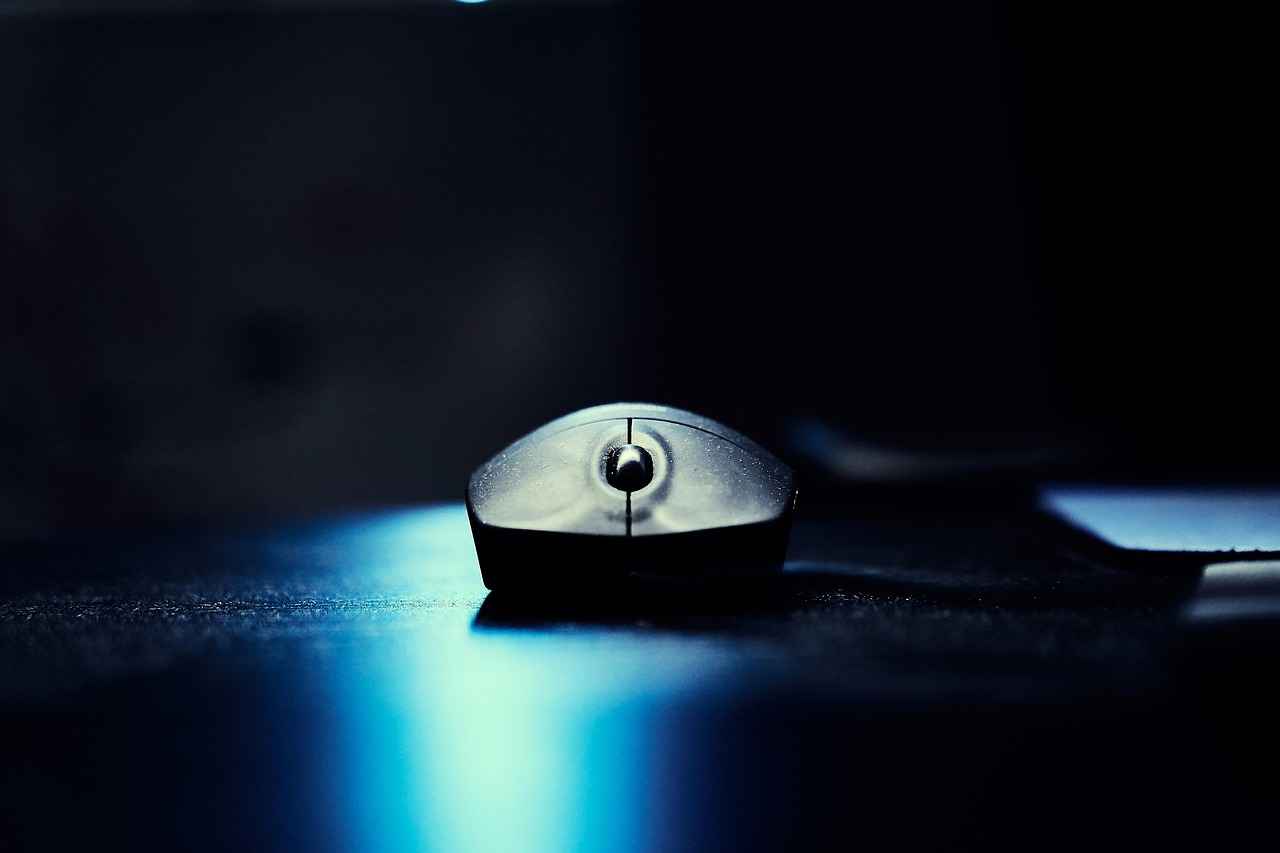This article provides a comprehensive guide on how to bleed coolant from your vehicle, ensuring optimal engine performance and preventing overheating issues. Proper maintenance of your vehicle’s cooling system is essential for its longevity and efficiency.
Coolant bleeding is the process of removing air pockets from the cooling system of your vehicle. These air pockets can hinder the flow of coolant, leading to inadequate cooling and potential engine damage. By bleeding the coolant, you ensure that the entire system is filled with fluid, enhancing heat transfer and maintaining the optimal operating temperature of your engine.
Recognizing the signs of air bubbles in your coolant system is crucial. Common symptoms include:
- Overheating Engine: If your temperature gauge is consistently high, air may be trapped in the system.
- Unusual Noises: Gurgling or bubbling sounds from the radiator can indicate air pockets.
- Coolant Leaks: If you notice coolant leaking, it may be a sign of air in the system.
Before starting the coolant bleeding process, gather the following tools:
- Wrench Set: For loosening and tightening radiator or coolant reservoir caps.
- Coolant Funnel: To prevent spills while adding coolant.
- Clear Hose: Useful for observing coolant flow during the bleeding process.
- Safety Gloves: To protect your hands from hot coolant.
1. Ensure the engine is cool before starting.2. Locate the radiator cap and remove it.3. Use a funnel to add coolant to the radiator until it is full.4. Start the engine and let it idle for a few minutes.5. Turn the heater to the maximum setting to help circulate coolant.6. Look for air bubbles escaping from the radiator neck.7. As bubbles diminish, top off the coolant as needed.8. Once no more bubbles are visible, replace the radiator cap securely.
Avoiding common pitfalls during the coolant bleeding process can save you time and trouble. Here are some frequent mistakes:
- Not Allowing the Engine to Cool: Always ensure the engine is cool before starting to prevent burns.
- Overfilling the Radiator: Too much coolant can lead to overflow and leaks.
- Neglecting to Check for Leaks: After bleeding, check the system for any leaks that may have arisen.
While DIY coolant bleeding is often manageable, knowing when to consult a professional is vital. Consider seeking expert assistance in the following scenarios:
- Persistent Overheating: If your engine continues to overheat despite bleeding.
- Complex Cooling System Issues: If you suspect a malfunctioning thermostat or water pump.
- Frequent Coolant Loss: If you find yourself constantly adding coolant, it may indicate a more serious issue.
By understanding the importance of coolant bleeding and following these guidelines, you can effectively maintain your vehicle’s cooling system and enhance its performance. Regular checks and timely intervention can prevent costly repairs and ensure a smooth driving experience.

What is Coolant Bleeding and Why is it Important?
Understanding the process of coolant bleeding is essential for every vehicle owner. This procedure is not merely a maintenance task; it plays a critical role in ensuring your vehicle’s cooling system operates efficiently. When air gets trapped in the cooling system, it can lead to overheating, which may cause serious damage to the engine. Therefore, knowing what coolant bleeding entails and its significance can help you avoid costly repairs.
Coolant bleeding refers to the process of removing trapped air from the cooling system. Over time, air can become trapped in the system due to various reasons, such as improper filling of coolant, leaks, or even temperature fluctuations. This trapped air can create air pockets that disrupt the flow of coolant, leading to inefficient cooling. Consequently, the engine may overheat, which can cause severe damage if not addressed promptly.
Why is coolant bleeding important? The primary reason is to maintain optimal engine temperature. A well-functioning cooling system ensures that the engine operates within its ideal temperature range, thereby enhancing performance and fuel efficiency. Additionally, by preventing overheating, you can extend the lifespan of your engine components, such as the head gasket and cylinder head, which are particularly vulnerable to heat damage.
Furthermore, regular coolant bleeding can improve the overall reliability of your vehicle. If air is allowed to remain in the system, it can lead to fluctuating temperatures, which can affect the performance of the heating system inside the cabin. This can result in discomfort for passengers, especially during extreme weather conditions.
In summary, understanding coolant bleeding is vital for maintaining your vehicle’s cooling system. By ensuring that air is removed from the system, you can prevent engine overheating and prolong the life of your vehicle. Regular checks and bleeding of the coolant can save you from unexpected breakdowns and expensive repairs, making it a crucial aspect of vehicle maintenance.

How to Identify Air Bubbles in Your Coolant System?
Identifying air bubbles in your vehicle’s coolant system is a crucial aspect of maintaining optimal engine performance. Air bubbles can lead to overheating, engine damage, and decreased efficiency. In this section, we will explore the common symptoms that indicate the presence of air bubbles, allowing you to address the issue promptly.
- Overheating Engine: One of the most noticeable signs of air bubbles is an overheating engine. If your temperature gauge rises unexpectedly, it may be due to air pockets disrupting the coolant flow.
- Coolant Leaks: If you notice coolant pooling under your vehicle, it could be a sign that air has entered the system, causing pressure imbalances that lead to leaks.
- Unusual Engine Noises: Gurgling or bubbling sounds coming from the engine can indicate that air is trapped in the coolant system, preventing proper circulation.
- Inconsistent Heater Performance: If your car’s heater is blowing cold air or fluctuating between hot and cold, this may suggest that air bubbles are interfering with the coolant flow to the heater core.
- Difficulty Maintaining Coolant Levels: If you find yourself frequently topping off the coolant reservoir without any visible leaks, it might be due to air pockets causing the coolant to be less effective.
To confirm the presence of air bubbles, you can conduct a simple visual inspection. Look for bubbles in the coolant reservoir when the engine is running. If you spot any, it’s a clear indication that you need to bleed the coolant system.
Additionally, performing a pressure test can help identify air in the system. Most auto parts stores offer pressure testing kits, which can be used to check for leaks and air pockets effectively. If the pressure drops, it may suggest that air is present.
In summary, being aware of these symptoms is vital for maintaining your vehicle’s cooling system. By recognizing the signs of air bubbles early, you can take the necessary steps to bleed the coolant system, ensuring your engine operates smoothly and efficiently.

What Tools Do You Need for the Coolant Bleeding Process?
When it comes to maintaining your vehicle’s cooling system, bleeding the coolant is a crucial step. Before you dive into this process, it’s essential to gather the right tools to ensure everything goes smoothly. In this section, we will outline the necessary equipment and materials you will need for an effective coolant bleeding procedure.
- Coolant Reservoir Funnel: A funnel specifically designed for coolant systems can help prevent spills and make the process cleaner.
- Wrench Set: A set of wrenches is vital for loosening and tightening any bolts or fittings associated with the coolant system.
- Coolant: Ensure you have the correct type of coolant for your vehicle. Check your owner’s manual for specifications.
- Radiator Cap: A functional radiator cap is essential for maintaining pressure in the cooling system.
- Vacuum Pump: While not mandatory, a vacuum pump can effectively remove air from the cooling system, making bleeding easier.
- Safety Glasses: Protect your eyes from potential splashes of coolant, which can be hazardous.
- Gloves: Wearing gloves will not only keep your hands clean but also protect them from harmful chemicals in the coolant.
Once you have gathered these tools, you can proceed with confidence. Here’s a brief overview of how each tool contributes to the bleeding process:
| Tool | Purpose |
|---|---|
| Coolant Reservoir Funnel | Helps in pouring coolant without spills. |
| Wrench Set | Used for loosening or tightening bolts in the coolant system. |
| Coolant | Necessary for refilling the system after bleeding. |
| Radiator Cap | Maintains system pressure to prevent overheating. |
| Vacuum Pump | Removes air pockets effectively. |
| Safety Glasses & Gloves | Protects from coolant splashes and skin contact. |
Having the right tools not only makes the bleeding process easier but also ensures that you are working safely and efficiently. Remember to double-check that all items are in good condition before starting. This preparation will help you avoid unnecessary delays and complications during the bleeding process, allowing you to keep your vehicle running smoothly.

Step-by-Step Guide to Bleeding Coolant from Your Vehicle
In this step-by-step guide, we will walk you through the essential process of bleeding coolant from your vehicle. This procedure is vital for maintaining your car’s cooling system and preventing overheating issues. By following these instructions, you can ensure that your engine operates efficiently and safely.
- Step 1: Gather Your Tools
Before starting, make sure you have the following tools and materials on hand:- Coolant (appropriate for your vehicle)
- Funnel
- Wrench set
- Drain pan
- Safety goggles and gloves
- Step 2: Prepare Your Vehicle
Park your vehicle on a level surface and allow the engine to cool completely. This is crucial to avoid burns or injuries. Once cooled, open the hood and locate the radiator cap. - Step 3: Locate the Bleed Valve
Many vehicles have a bleed valve on the cooling system. Consult your owner’s manual to find its exact location. Typically, it’s near the thermostat or on the radiator. - Step 4: Open the Bleed Valve
Using a wrench, carefully open the bleed valve. You might hear a hissing sound as air escapes. This is normal and indicates that air is being released from the system. - Step 5: Add Coolant
While the bleed valve is open, use a funnel to add coolant to the radiator. Keep an eye on the coolant level and ensure it remains topped up to prevent air from re-entering the system. - Step 6: Close the Bleed Valve
Once you see a steady stream of coolant without air bubbles, close the bleed valve tightly. This step is crucial to maintaining system pressure. - Step 7: Check for Leaks
After bleeding the coolant, inspect the area around the bleed valve and radiator for any signs of leaks. If you notice any, it may indicate a need for further inspection or repair. - Step 8: Test Drive Your Vehicle
Finally, take your car for a short drive and monitor the temperature gauge. If it remains stable, you’ve successfully bled the coolant!
By following these steps, you can effectively bleed the coolant from your vehicle, ensuring optimal performance and longevity. Remember, regular maintenance of your cooling system is key to avoiding costly repairs and keeping your engine running smoothly.

Common Mistakes to Avoid When Bleeding Coolant
When it comes to bleeding coolant from your vehicle, many car owners may overlook critical steps that can lead to complications. By being aware of common mistakes, you can ensure a smoother process and maintain your vehicle’s efficiency. Below are some frequent pitfalls and tips on how to avoid them:
- Neglecting to Check the Coolant Level: Before starting the bleeding process, always ensure that your coolant reservoir is filled to the appropriate level. Failing to do so can lead to air pockets remaining in the system, which can cause overheating.
- Not Allowing the Engine to Cool: It’s essential to allow your engine to cool down before attempting to bleed the coolant. Opening the radiator cap on a hot engine can lead to serious burns from steam and hot coolant.
- Using the Wrong Tools: Ensure you have the right tools, such as a funnel and a bleed screw wrench, to make the process easier. Using improvised tools can lead to mistakes and damage.
- Skipping the Bleeding Process: Some may think they can skip bleeding if they don’t see any visible air bubbles. However, it’s crucial to bleed the system fully to prevent air from causing issues later.
- Overtightening the Radiator Cap: After bleeding, be cautious not to overtighten the radiator cap. This can damage the cap and lead to leaks.
- Ignoring Signs of Air Bubbles: Pay attention to your engine’s performance. If you notice overheating or fluctuating temperature readings, it may indicate that air bubbles are still present in the system.
- Failing to Monitor the Temperature Gauge: During the bleeding process, keep an eye on the temperature gauge. If it rises too high, shut off the engine immediately to avoid damage.
By being mindful of these common mistakes, you can effectively manage the coolant bleeding process. Remember, success in this DIY task not only saves you time but also protects your vehicle from potential overheating issues. If you’re ever in doubt, don’t hesitate to consult a professional mechanic to ensure your vehicle’s cooling system is functioning optimally.

When Should You Seek Professional Help for Coolant Issues?
When it comes to maintaining your vehicle’s cooling system, understanding when to seek professional help is just as crucial as knowing how to perform DIY coolant bleeding. While many car owners can handle basic coolant bleeding tasks, there are specific scenarios where expert assistance is necessary to prevent further complications and ensure the longevity of your vehicle.
What Are the Signs That Indicate a Need for Professional Help?
- Persistent Overheating: If your engine continues to overheat even after bleeding the coolant system, this could indicate a deeper issue, such as a malfunctioning thermostat or a failing water pump. It’s best to consult a professional to diagnose these problems.
- Frequent Coolant Loss: Regularly having to top off your coolant may suggest a leak or a more serious internal issue. A mechanic can perform a pressure test to identify leaks that may not be visible to the naked eye.
- Unusual Noises: Hearing gurgling or bubbling sounds from the coolant system can be a sign of trapped air or a failing component. A professional can help identify the source of the sound and recommend necessary repairs.
- Fluid Discoloration: If the coolant appears rusty or has an oily texture, it could indicate contamination. This situation requires immediate professional assessment to prevent damage to the engine.
Why Is Professional Assistance Important?
Consulting a professional is essential for several reasons:
- Expert Diagnosis: Mechanics have the training and tools to accurately diagnose complex issues that may be affecting your cooling system.
- Avoiding Further Damage: Attempting to fix problems without the right knowledge can lead to more significant damage and costly repairs down the line.
- Access to Specialized Tools: Some repairs may require specialized tools that are not typically available to the average car owner.
What to Expect When You Consult a Professional?
When you take your vehicle to a mechanic for coolant issues, expect a thorough inspection of the cooling system. The mechanic will likely:
1. Perform a pressure test to identify leaks.2. Check the thermostat and water pump functionality.3. Inspect hoses and connections for wear and tear.4. Analyze the coolant for contaminants.
This comprehensive approach ensures that all potential issues are addressed, allowing for a more effective solution.
In summary, while many car owners can tackle basic coolant bleeding, recognizing the limits of your expertise is key. If you encounter any of the warning signs mentioned above, do not hesitate to seek professional help. This proactive approach will not only safeguard your vehicle’s performance but also save you from more severe and costly repairs in the future.
Frequently Asked Questions
- What does it mean to bleed coolant?
Bleeding coolant involves removing air pockets from your vehicle’s cooling system. These air pockets can cause overheating and inefficient engine performance. By bleeding the coolant, you ensure that the system is filled with liquid coolant, allowing for optimal heat transfer.
- How do I know if my coolant system has air bubbles?
Common signs of air bubbles include fluctuating temperature gauges, unusual engine noises, or coolant leaks. If you notice your engine overheating or the coolant reservoir bubbling, it’s time to check for air in the system.
- What tools do I need to bleed coolant?
You will require basic tools such as a wrench, a funnel, and possibly a vacuum pump. Having a coolant catch pan is also handy to avoid spills. Make sure you have the right type of coolant for your vehicle as well!
- Can I bleed coolant without professional help?
Absolutely! Many car owners successfully bleed their coolant systems at home. Just follow the step-by-step guide carefully, and you’ll be on your way to maintaining your vehicle without needing to shell out for a mechanic.
- What mistakes should I avoid when bleeding coolant?
Common mistakes include not allowing the engine to cool down, failing to properly secure the radiator cap, or neglecting to check for leaks post-bleeding. Always take your time and double-check your work!
- When should I call a professional for coolant issues?
If you encounter persistent overheating, coolant leaks, or if the bleeding process seems too complex, it’s best to consult a professional. They can diagnose underlying issues that may not be apparent during a DIY attempt.




